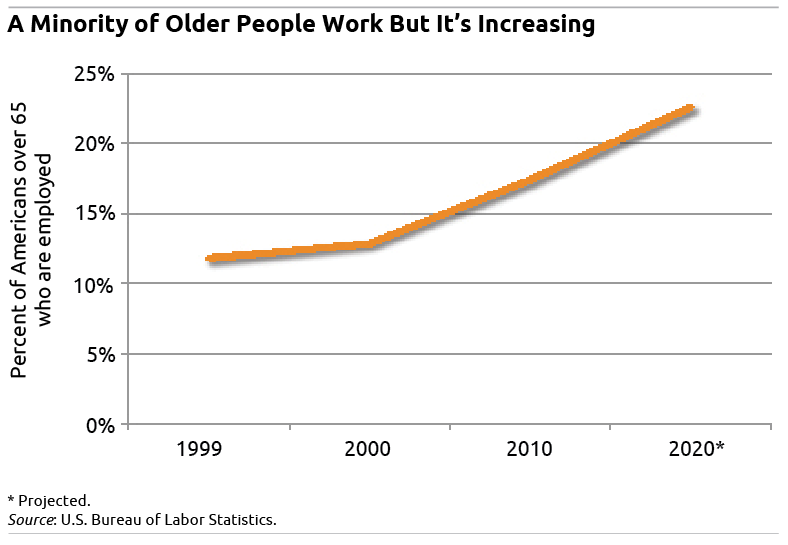
Aging U.S. Workers: The Fittest Thrive
By the time people reach their mid-60s, two out of three have retired, either voluntarily or because they’re unable to keep or find a job. By age 75, nine out of ten are out of the labor force.
But the minority who do continue working aren’t just survivors – they’re thrivers. Think novelist Toni Morrison, rocker Neil Young, or the older person who still comes into your office every day.
 The earnings of U.S. workers in their 60s and 70s are rising faster than earnings for people in their prime working years, according to a new study. Defying the stereotype that they’re marking time, today’s older workers are also just as productive as people in their prime working years.
The earnings of U.S. workers in their 60s and 70s are rising faster than earnings for people in their prime working years, according to a new study. Defying the stereotype that they’re marking time, today’s older workers are also just as productive as people in their prime working years.
Driving these trends is education: far more older Americans now have a college degree than they once did.
There’s a “perception that the aged are less healthy, less educated, less up-to-date in their knowledge and more fragile than the young,” but this does “not necessarily describe the people who choose or who are permitted to remain in paid employment at older ages,” Gary Burtless, a senior fellow at the Brookings Institution, concluded in his study.
The experience of age 60-plus workers is becoming increasingly important, because there are more of them in this country than there ever have been – a rising trend that will continue. The obvious reason for their growing numbers is the baby boom bulge. The oldest boomers turn 67 this year. But more people are also delaying their retirement, whether due to financial necessity, good health, or a love of work.
Burtless’ study looked in great detail at the dramatic gains since 1985 that have been achieved by older U.S. workers – ages 60 to 74 – by comparing how well they’ve done relative to people in their prime working years, ages 35 to 54. He gauged their progress, compared with younger adults, using three measures:
- More Education. In 1985, just 11 percent of older Americans had graduated from college, compared with 23 percent of younger adults. Today, roughly one-third of people in each age group have degrees.
- Earnings Growth. Older men have seen enormous increases in their pay: in 1985, they earned just 70 cents for every $1.00 of average annual income – wages plus self-employment income – earned by adult men in their prime. By 2010, that had jumped to 92 cents.
Older women’s annual incomes are also increasing faster than the incomes of women in their prime, according to the study published by the Center for Retirement Research, which also supports this blog. But older women still haven’t caught up with prime-age workers to the extent that older men have.
- Productivity Gains. It is no longer true that older workers are less productive than employees in their peak working years. Burtless found that older men’s hourly wages – his unit of measurement for comparing productivity – have caught up with hourly wages for workers in their prime. Older women have somewhat closed the gap with younger women.
The workforce of older Americans is not only getting bigger. What Burtless shows is that their status in the labor force is also getting better.
Full disclosure: The research cited in this post was funded by a grant from the U.S. Social Security Administration (SSA) through the Retirement Research Consortium, which also funds this blog. The opinions and conclusions expressed are solely those of the blog’s author and do not represent the opinions or policy of SSA or any agency of the federal government.






